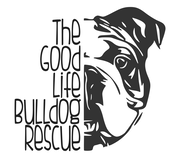Educate
|
|
|
|
|
The Good Life Bulldog Rescue
Copyright © 2019
|
The Good Life Bulldog Rescue is a non-profit, 501(c)3 organization located in Omaha, Nebraska. Contact Us: [email protected] Mail Only: 2605 S 33 St, Omaha, NE 68105 |
